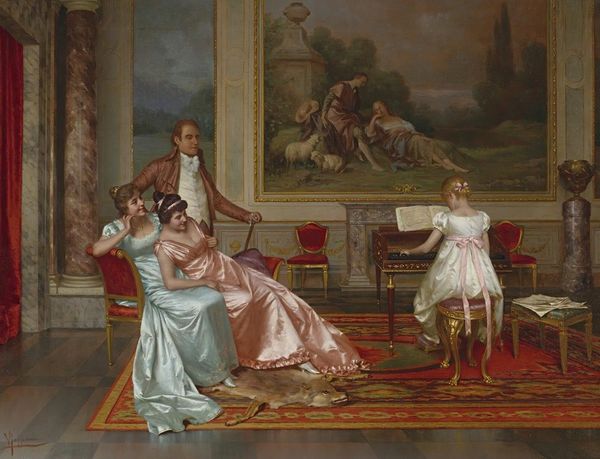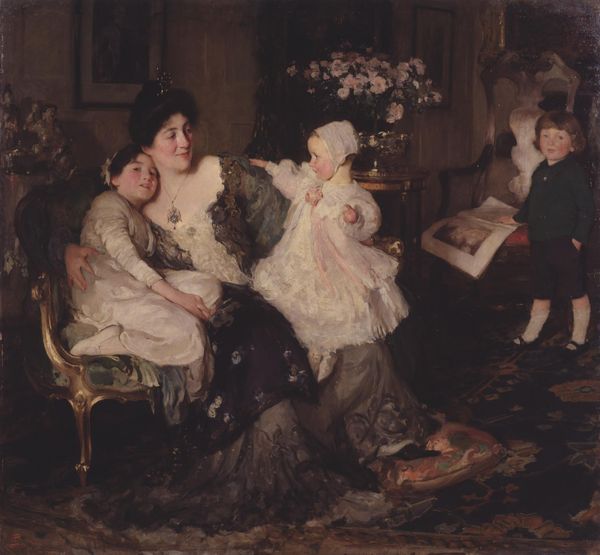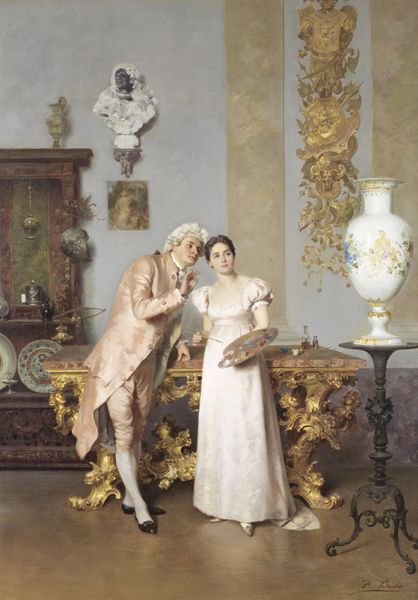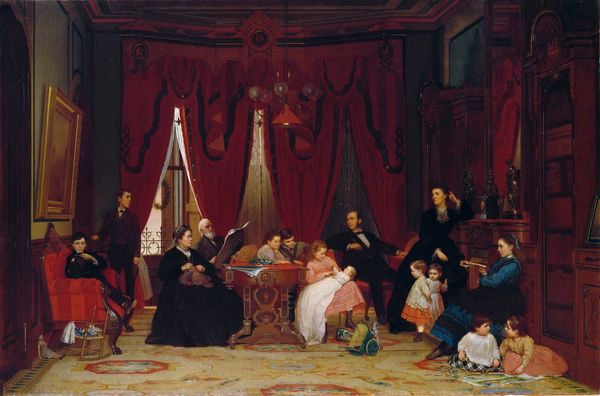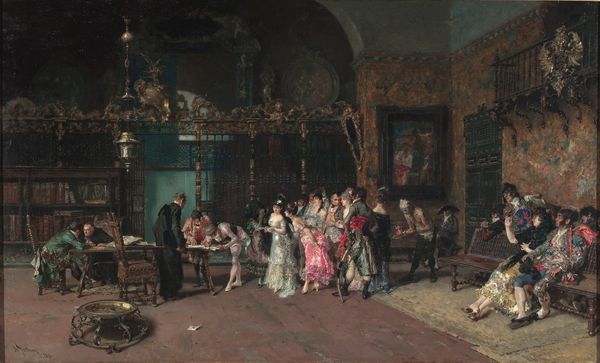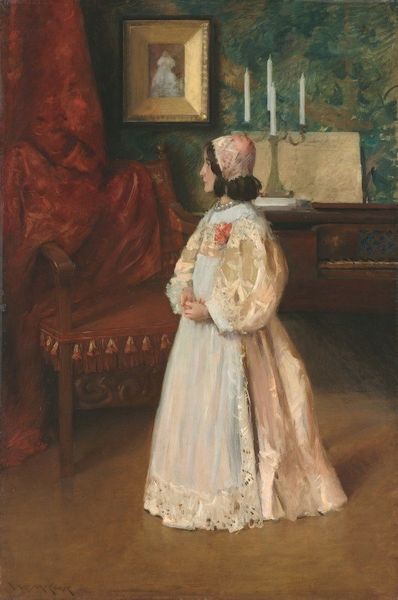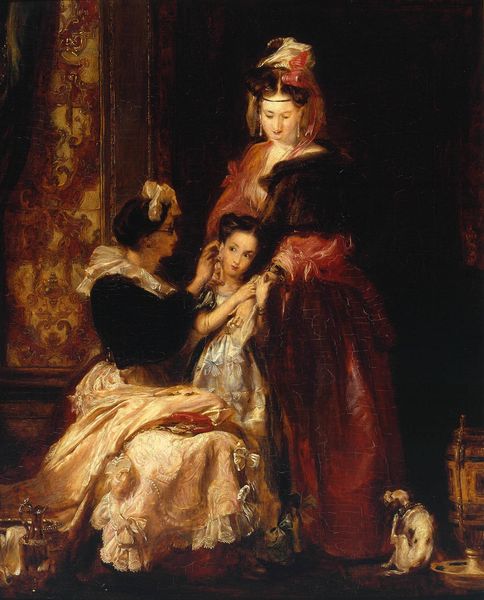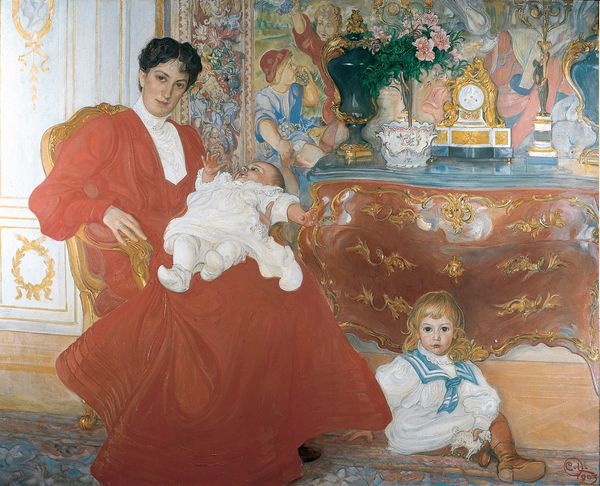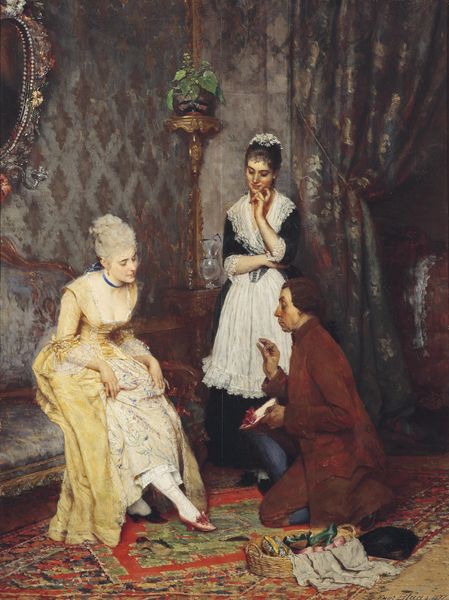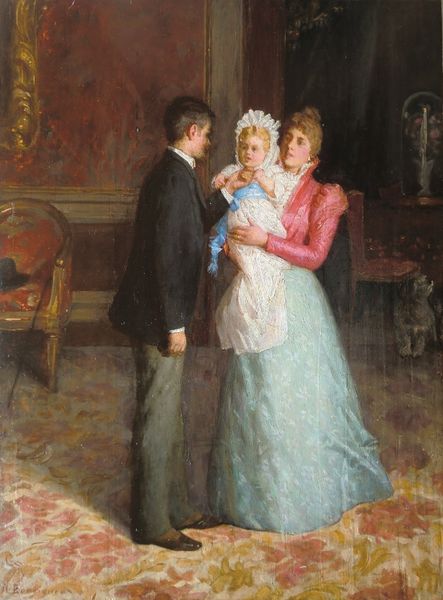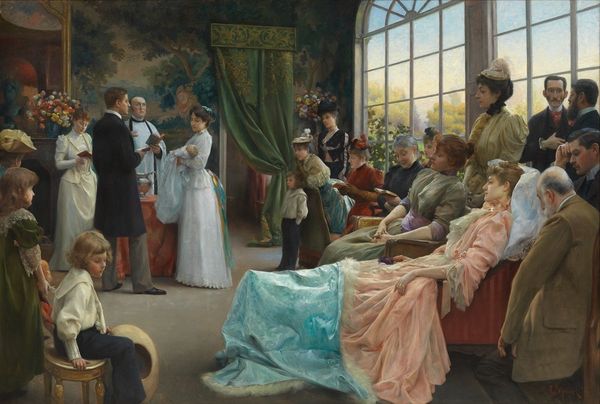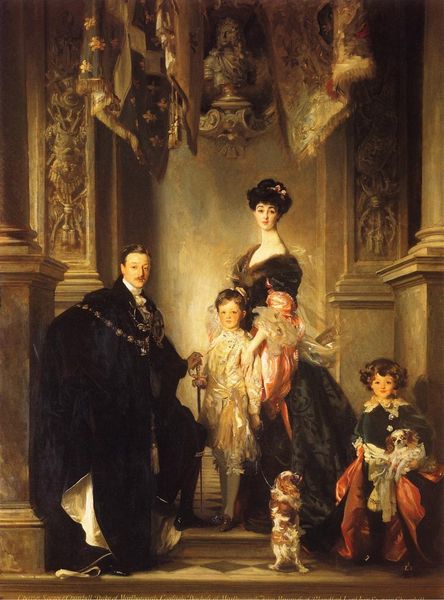
Copyright: Public Domain: Artvee
Curator: Standing before us is John Singer Sargent’s “Sir George Sitwell, Lady Ida Sitwell and Family,” circa 1900. He painted it using oil on canvas. What strikes you first? Editor: That almost theatrical lighting. It really directs your gaze, doesn't it? And those reds—the daughter's dress, the flower arrangement—they pop against the muted tones. It feels meticulously staged. Curator: Indeed. The composition highlights a rigidly patriarchal system. Sir George is physically elevated over Lady Ida, and the daughters on either side of them form bookends representing dynastic preservation of lineage. There's an almost palpable tension here. Lady Ida was a rather controversial figure. Editor: Controversial indeed, according to legend! She reminds me of some pre-Raphaelite portraits, almost a Rossetti painting of a medieval goddess. Note the inclusion of mythological imagery in the backdrop that mimics her headdress, suggesting continuity and timeless grace through visual language. This feels purposeful, connecting her to traditions of female virtue or, perhaps, something a bit more enigmatic. Curator: And while she appears in an elegant white dress with elaborate decoration that marks an association with beauty and prestige, remember she was a rather scandalous figure in the aristocratic society. Sargent highlights the inherent contradiction in that he does this commission piece, simultaneously immortalizing a flawed figure while paying a commission. The Sitwells were on the verge of a rather spectacular descent due to mismanagement. Editor: Yet look at the little ones playing with toy soldiers! A very powerful and predictive cultural symbol in retrospect. Their presence softens the edges of the painting. There is continuity implied that isn't there in the historical records. Perhaps he aims to add depth to our viewing with the image, regardless of circumstance. Curator: Sargent masterfully captures the social codes of the time but there’s a very obvious discomfort if you dig a little. Look how the mother is almost completely separate from the husband and oldest daughter; then how the younger children are sequestered down by the bottom. Sargent leaves enough clues in this depiction that gives a thoughtful critic a place to enter this difficult conversation. Editor: Well, it is an emotionally resonant work that plays with historical concepts as symbols that allows me to really understand their standing as relevant figures. A truly insightful glimpse into their complex existence. Curator: Absolutely, and it continues to spark crucial questions about power, representation, and legacy today.
Comments
No comments
Be the first to comment and join the conversation on the ultimate creative platform.
